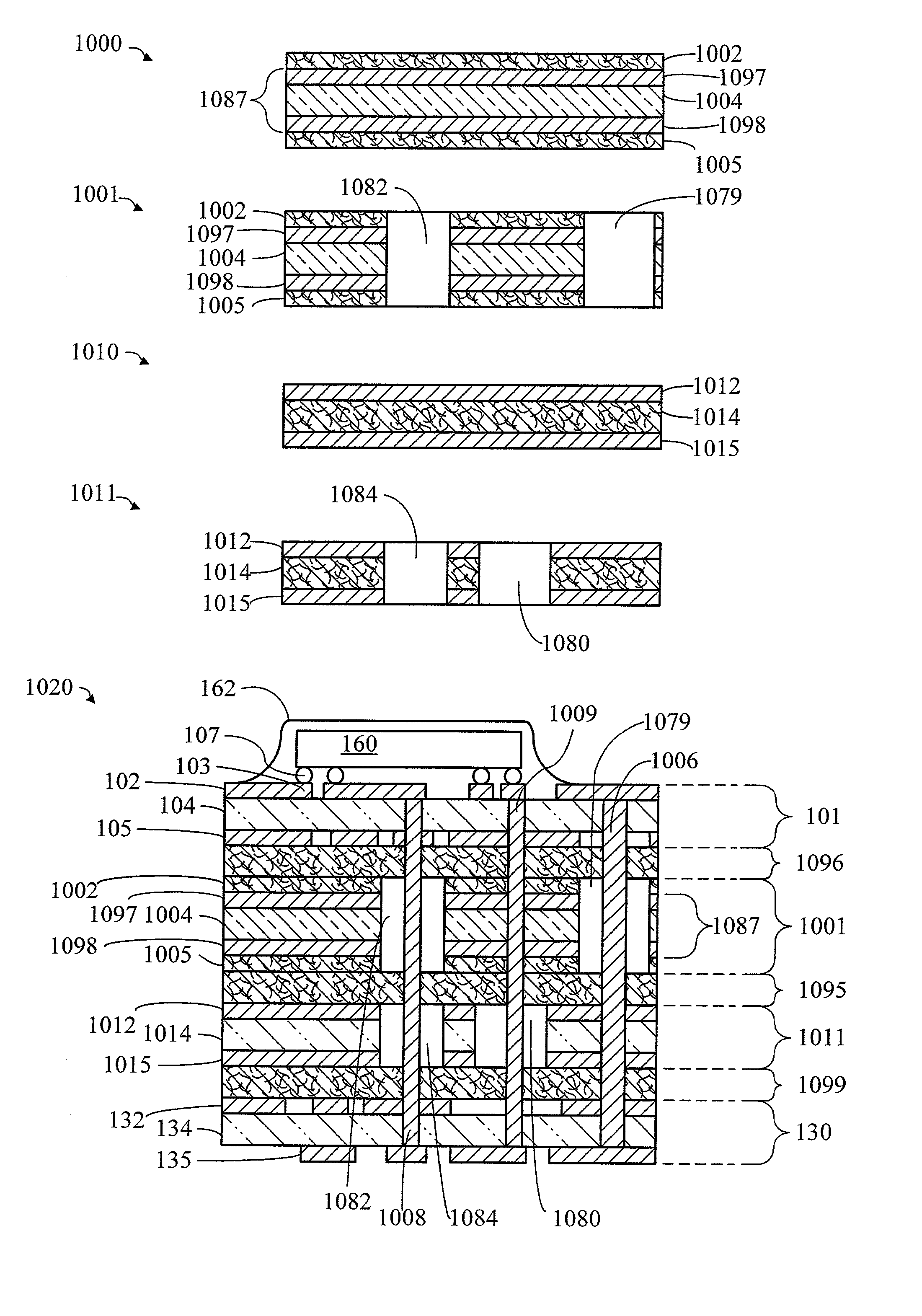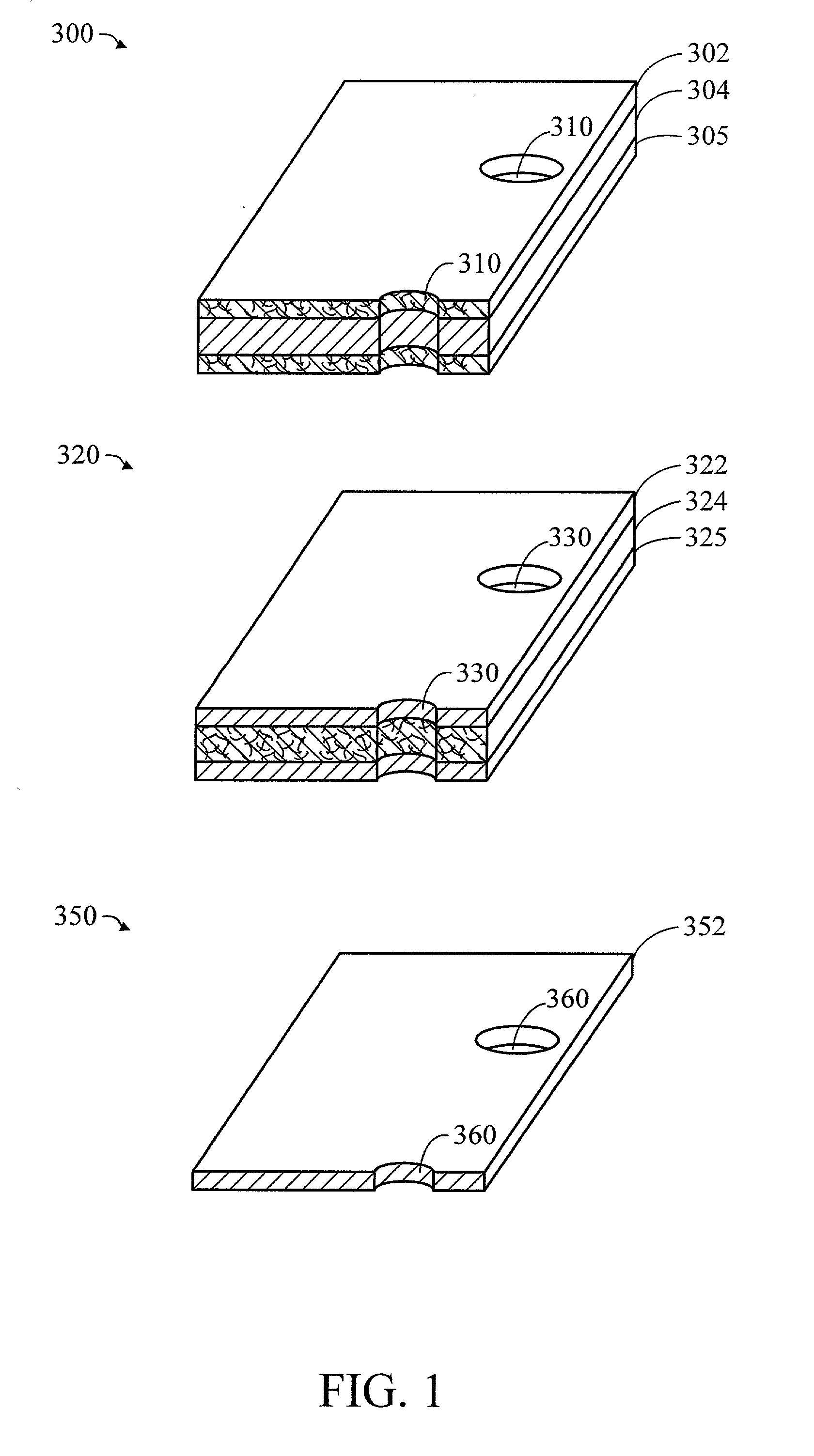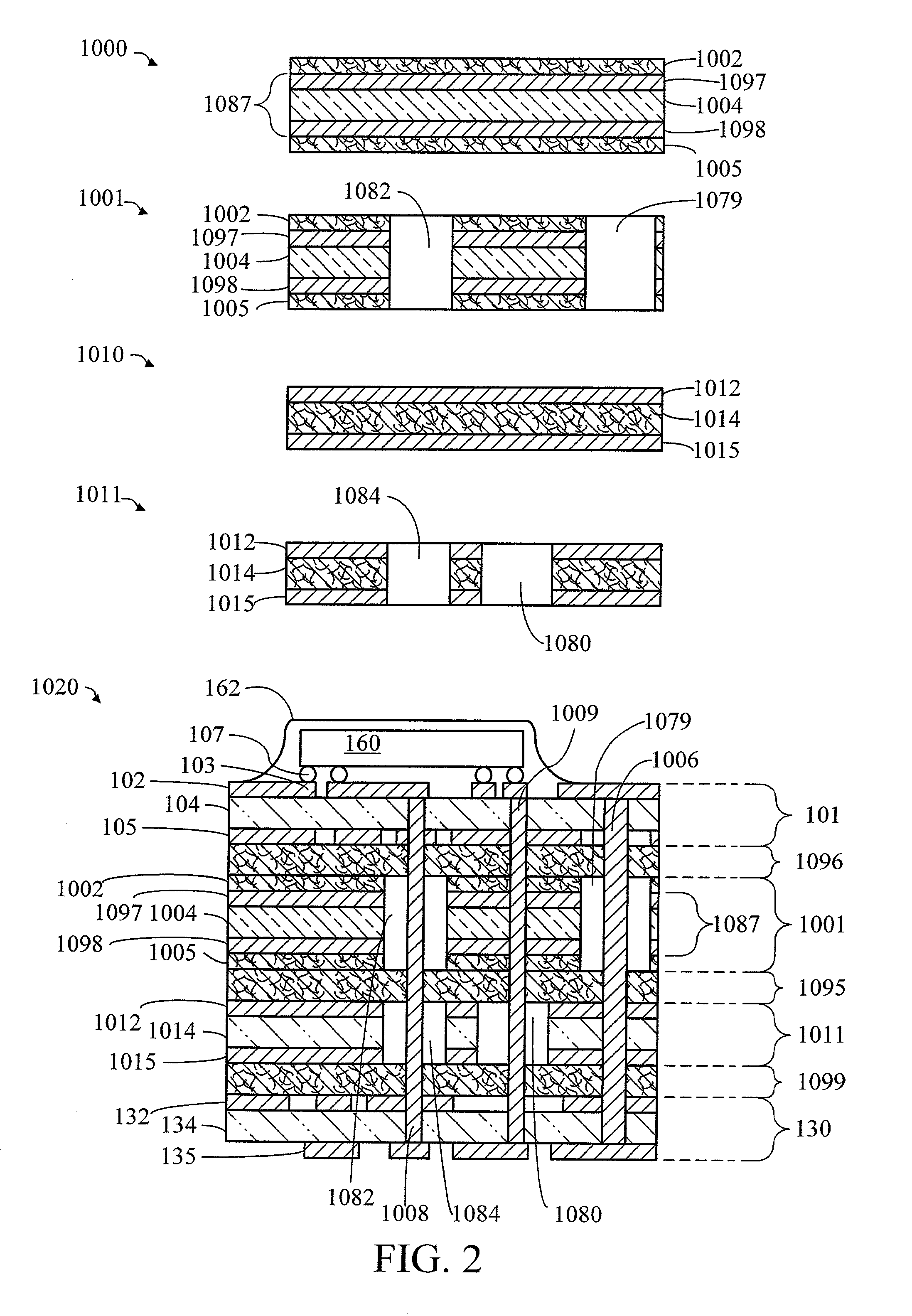Low CTE power and ground planes
a ground plane and low cte technology, applied in the field of low cte power and ground planes, can solve the problems of pcbs being associated with pcbs, pcbs being generally more complex, and many systems today cannot tolerate extended down time necessary, and achieve the effect of easy fractur
- Summary
- Abstract
- Description
- Claims
- Application Information
AI Technical Summary
Benefits of technology
Problems solved by technology
Method used
Image
Examples
Embodiment Construction
[0036] The preferred embodiments of the present invention overcome the limitations of the prior art by providing conductive materials having low CTEs that are used for power and ground planes in Printed Circuit Boards (PCBs) and PCBs used as Laminate Chip Carriers (LCCs). By providing low CTE materials for power and ground planes in PCBs, the overall CTE of the PCB can be lowered, which decreases the chances of chip failure, dielectric cracking, and shear induced debonding. In addition, the problems (galvanic activity and corrosion, multi-step etching, and complicated waste treatment) associated with the use of the exotic, low CTE metals are completely eliminated or dramatically reduced.
[0037] Before proceeding to the preferred embodiments, a short discussion of terminology is beneficial. As stated in the Overview section, "prepreg" is a term that generally connotes fiberglass and epoxy resin. This is often termed "prepreg" because the fiber is impregnated with resin during processi...
PUM
| Property | Measurement | Unit |
|---|---|---|
| thickness | aaaaa | aaaaa |
| thickness | aaaaa | aaaaa |
| coefficient of thermal expansion | aaaaa | aaaaa |
Abstract
Description
Claims
Application Information
 Login to View More
Login to View More - R&D
- Intellectual Property
- Life Sciences
- Materials
- Tech Scout
- Unparalleled Data Quality
- Higher Quality Content
- 60% Fewer Hallucinations
Browse by: Latest US Patents, China's latest patents, Technical Efficacy Thesaurus, Application Domain, Technology Topic, Popular Technical Reports.
© 2025 PatSnap. All rights reserved.Legal|Privacy policy|Modern Slavery Act Transparency Statement|Sitemap|About US| Contact US: help@patsnap.com



